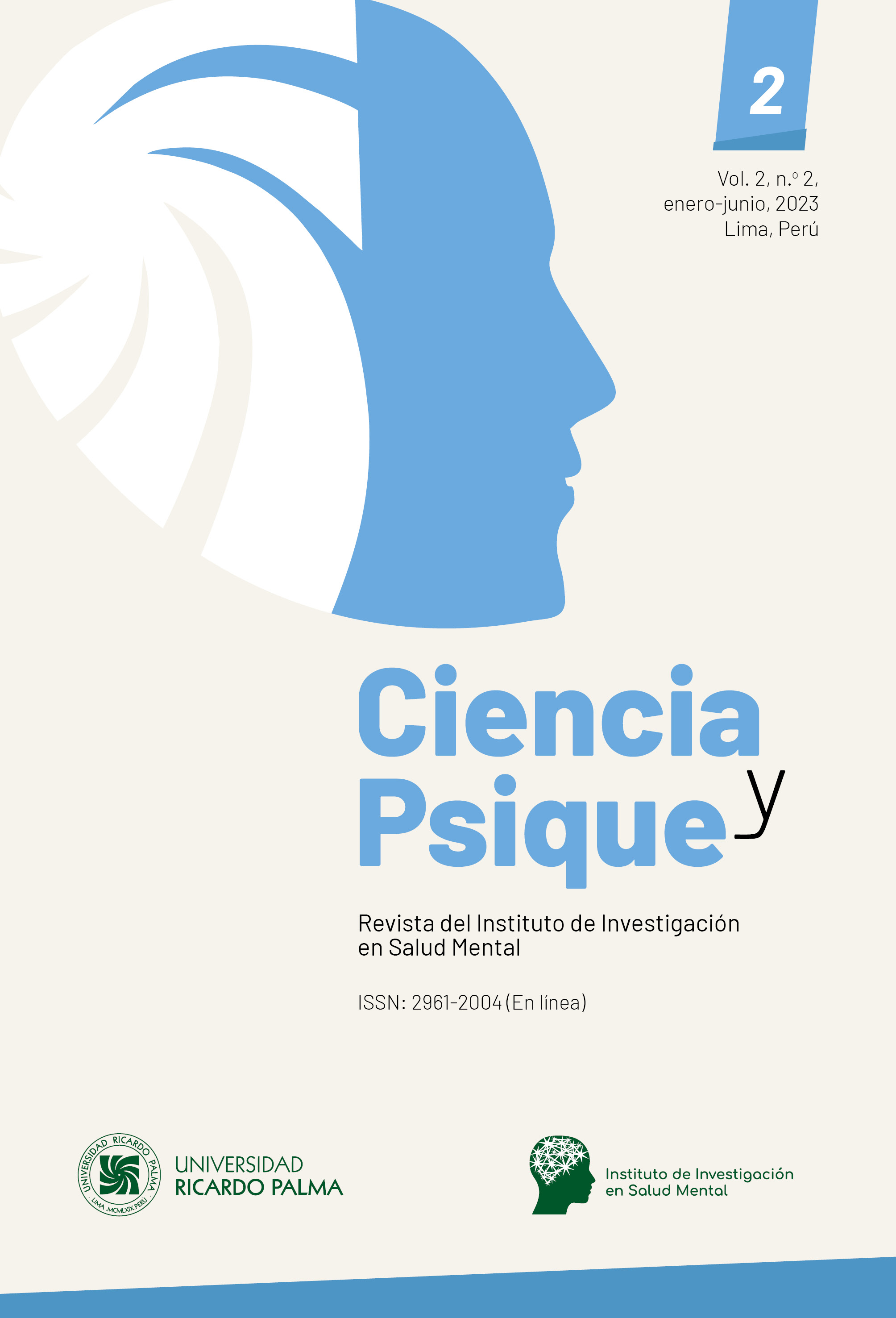La escala de mentiras o de deseabilidad social como criterio de exclusión en el empleo de los inventarios de comportamiento psicosocial desajustado
DOI:
https://doi.org/10.59885/cienciaypsique.2023.v2n2.06Palabras clave:
sinceridad, mentiras, deseabilidad social, inventario de desajuste del comportamientoResumen
Estudio de carácter psicométrico orientado a validar empíricamente una escala de mentiras o de deseabilidad social elaborada para el descarte de la muestra que puntuaba muy alto en dicha escala, que formaba parte del Inventario de Desajuste del Comportamiento Psicosocial (INDACPS-2020). El INDACPS-2020 fue elaborado en el año 2020 y permite recoger información de 9 indicadores comportamentales de desajustes a los cuales se les adicionó la escala de mentiras. La muestra total inicial fue de 1397 sujetos; los puntajes de la escala de mentiras fueron convertidos en puntajes percentiles, separándose dos grupos muestrales: los que tenían muy alta puntuación en la escala de mentiras y los que tenían media y baja puntuación. Las muestras definitivas quedaron conformadas por 888 personas en el grupo de sinceridad, y por 509 personas en el grupo de mentiras. Se procedió a realizar la estadística descriptiva de cada grupo en cuanto a los 9 indicadores de comportamiento psicosocial desajustado y, luego, al estudio comparativo de los resultados de los dos grupos mediante procedimientos estadísticos no paramétricos y paramétricos. Los resultados han permitido demostrar que hay diferencias estadísticamente significativas entre los grupos de sinceridad y de mentiras, en cada una de las escalas, a excepción de la escala de temores. En todos los casos se observa que los mentirosos puntúan como menos desajustados y los honestos, como más desajustados en cuanto a los nueve indicadores.
Citas
Armas, E., & García, P. (2009). ATRAMIC: La mentira informada. Anuario de Psicología Jurídica, 19(1), 125-133. https://journals.copmadrid.org/apj/art/a60937eba57758ed45b6d3e91e8659f3
Blandón-Gitlin, I., López, R., Masip, J., & Fenn, E. (2017). Cognición, emoción y mentira: implicaciones para detectar el engaño. Anuario de Psicología Jurídica, 27(1), 95-106. https://doi.org/10.1016/j.apj.2017.02.004
Castro, C., López, E., & Morales, G. (2013). Estudio cognitivo de la mentira humana. Ciencia UANL. Revista de Divulgación Científica y Tecnológica de la Universidad Autónoma de Nuevo León, 16(64), 91-102. http://cienciauanl.uanl.mx/wp-content/uploads/2014/01/Estudio-cognitivo-de-la-mentira.pdf
Crowne, D. P., & Marlowe, D. (1960). A new scale of social desirability independent of psychopathology. Journal of Consulting Psychology, 24(4), 349-354. https://doi.org/10.1037/h0047358
DePaulo, B. (2010). The hows and whys of lies. Createspace Independent Publishing Platform.
Edwards, A. L. (1957). The social desirability variable in personality assessment and research. Dryden Press.
Ekman, P. (2009). Cómo detectar mentiras. Una guía para utilizar en el trabajo, la política y la familia. Paidós.
Eysenck, S. B. G., & Eysenck, H. J. (1970). A factor analytic studie of the lie of the Junior Eysenck Personality Inventory. Personality, 1, 3-10.
Masip, J., & Herrero, C. (2015a). Nuevas aproximaciones en detección de mentiras I. Antecedentes y marco teórico. Papeles del Psicólogo, 36(2), 83-95. https://www.papelesdelpsicologo.es/pdf/2564.pdf
Masip, J., & Herrero, C. (2015b). Nuevas aproximaciones en detección de mentiras II. Estrategias activas de entrevista e información contextual. Papeles del Psicólogo, 36(2), 96-108. https://www.papelesdelpsicologo.es/pdf/2565.pdf
Matsumoto, D. (1991). Cultural influences on facial expressions of emotion. Southern Communication Journal, 56(2), 128-137. https://doi.org/10.1080/10417949109372824
Meehl, P. E., & Hathaway, S. R. (1946). The K factor as a suppressor variable in the Minnesota Multiphasic Personality Inventory. Journal of Applied Psychology, 30(5), 525-564. https://doi.org/10.1037/h0053634
Michaelis, W., & Eysenck, H. J. (1971). The determination of personality inventory factor patterns and intercorrelations by changes in reallife motivation. The Journal of Genetic Psychology. Research and Theory on Human Development, 118(2), 223-234. https://doi.org/10.1080/00221325.1971.10532611
Ortega, M. (2010). Comportamiento mentiroso: Un análisis conceptual desde una perspectiva interconductual. Revista Electrónica de Psicología Iztacala, 13(1). https://www.revistas.unam.mx/index.php/repi/article/view/16910
Vrij, A. (2008). Detecting lies and deceit: Pitfalls and opportunities. John Wiley & Sons Ltd.
Weiner, I., & Greene, R. (2017). Handbook of personality assessment. John Wiley & Sons, Inc.
Descargas
Publicado
Cómo citar
Número
Sección
Licencia
Derechos de autor 2023 Ciencia y Psique

Esta obra está bajo una licencia internacional Creative Commons Atribución 4.0.




